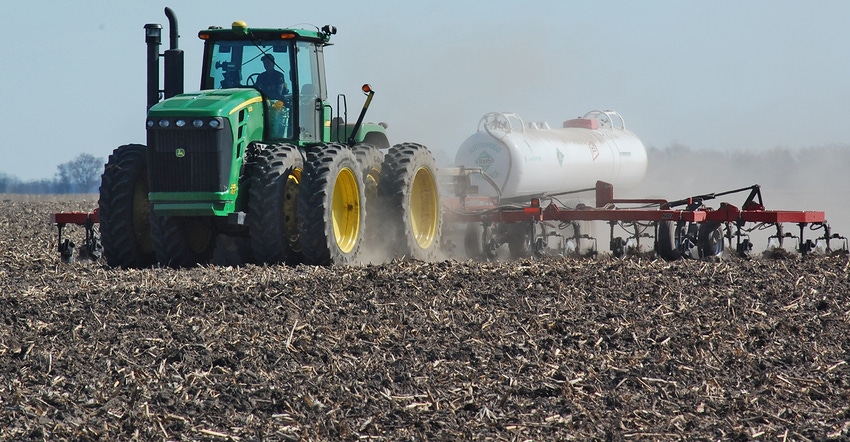August 16, 2017

Fall nitrogen fertilizer application can be a good agronomic and logistic tool in the Northern Plains — if it is applied on the proper soils at the proper time, says Dave Franzen, North Dakota State University Extension soils specialist.
Here are his guidelines:
• Don’t apply fall N to sandy loam or coarser soils, or to fields where spring flooding is a recurring problem.
• In other soils/fields, no fertilizer N, except for that in 11-52-0 during a P and/or K application, should be applied before Oct. 1, even if soil temperatures dip below 50 degrees F.
• After Oct. 1, measure soil temperature between 6 a.m. and 8 a.m. at the 4-inch depth, and when the temperature reaches 50 degrees F, it is relatively safe to start applying anhydrous ammonia. It is not, though, safe to apply urea. Wait another week after the ammonia-safe date before applying banded urea, and wait two weeks after the ammonia-safe date before applying broadcast urea.
“The reason for these recommended calendar and temperature guidelines is because of soil bacteria-produced nitrification; the transformation of ammonium nitrogen to nitrate nitrogen. Ammonium N is held by soil/organic matter, while nitrate moves with water. The goal of any fall N application is to go into the winter deep-freeze with as little nitrate and as much ammonium as possible. Waiting for the calendar to be close enough to winter and for the soil to cool down to slow the metabolism of soil bacteria are keys to a successful fall N application,” he says.
On high-clay soils, applying about half the N in the fall for corn and other row crops, with the other portion sidedressed, will minimize spring denitrification problems inherent in these soils, Franzen says.
Adding nitrapyrin (N-Serve) to the anhydrous ammonia will slow the nitrification process, but don’t use it to move the application to an earlier date. Instead, use it to protect the N from an abnormally warm and extended fall.
Nitrapyrin as Instinct can be used on urea to protect the N from nitrification, as can a proper rate of DCD with urea. Agrotain and its NBPT-containing relatives should be not be used as a nitrification inhibitor with urea, because they do not act on the nitrification process; they are only effective against the urease enzyme.
Source: ND Crop and Pest Report
You May Also Like




